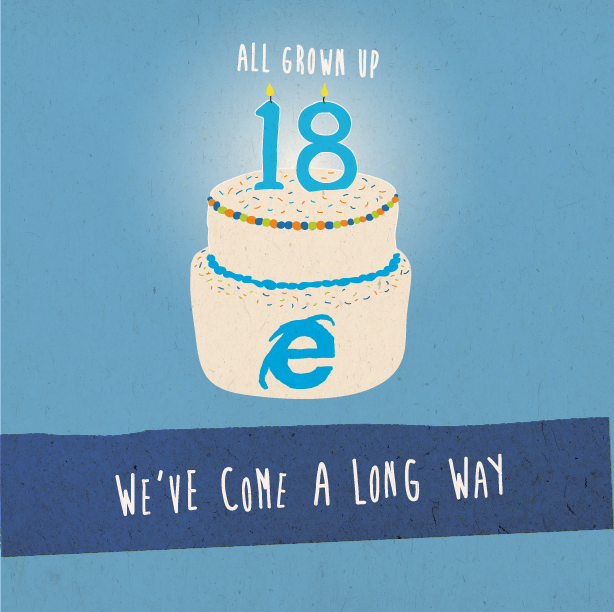Internet Explorer at 18 -- Microsoft's web browser comes of age
 It's a big day in anyone's life -- turning 18. The strike of the clock at midnight opens up a world of opportunity that simply did not exist before. Things may not be quite so dramatic in the life of a web browser (they can't vote, for starters), but today is a big day for Internet Explorer nonetheless; today marks the 18th anniversary of the release of Microsoft's much loved and hated browser. There's something of a nostalgia-fest underway at IE's Facebook page!
It's a big day in anyone's life -- turning 18. The strike of the clock at midnight opens up a world of opportunity that simply did not exist before. Things may not be quite so dramatic in the life of a web browser (they can't vote, for starters), but today is a big day for Internet Explorer nonetheless; today marks the 18th anniversary of the release of Microsoft's much loved and hated browser. There's something of a nostalgia-fest underway at IE's Facebook page!
Whichever side of the fence you fall on, there's no denying that Internet Explorer has been, and continues to be, an incredibly important tool in opening up the Internet to a wider audience. Usage figures may not be quite as high as they were back in the heady days at the turn of the century when there was slightly less competition in the market, but IE continues to do well -- amazingly well considering the criticism and ridicule often levelled at it.
For many computer users, Internet Explorer is what their computer is for -- the little blue 'e' icon may be the only one they ever click, (hi, mum and dad!). It is a portal into an online world where anything is possible. But there's now much more choice available to anyone looking to explore the web, and IE's share has dropped off. With the innovations and fast development cycles found in the likes of Firefox, Opera and Chrome, it's easy to forget just how incredible Internet Explorer was when it was first released.
August 16, 1995 is when it all started. Internet Explorer 1 was not, amazingly, initially included in Windows 95, but rather was part of the add-on Plus! pack -- OEM versions of Windows 95 did include the browser. It was only a matter of a month before IE 2 was unveiled, although there was a slightly longer wait for a Mac release.
Internet Explorer 3 was bundled with Windows 95 OSR, but it was version 4 that changed the way Internet Explorer was viewed. The browser became tightly woven into Windows and introduced the Active Desktop feature that allowed for web content to be displayed on the desktop.
Development continued through version 5, 6 and (five years later) 7, and it is Internet Explorer 8 that is still the most commonly used desktop browser. The release of Internet Explorer 9 saw support for Windows XP dropped, while version 10 is the current stable version available to users of Windows 7 and 8. There's still a lot to look forward to, with Internet Explorer 11 just around the corner for Windows 8.1.
In the face of competition from many rivals, Internet Explorer still manages to dominate more than half of the browser market -- quite a feat for any application.
So, happy birthday, Internet Explorer! We salute you! I may not use you, but there'll always be a little space in my heart for you.
